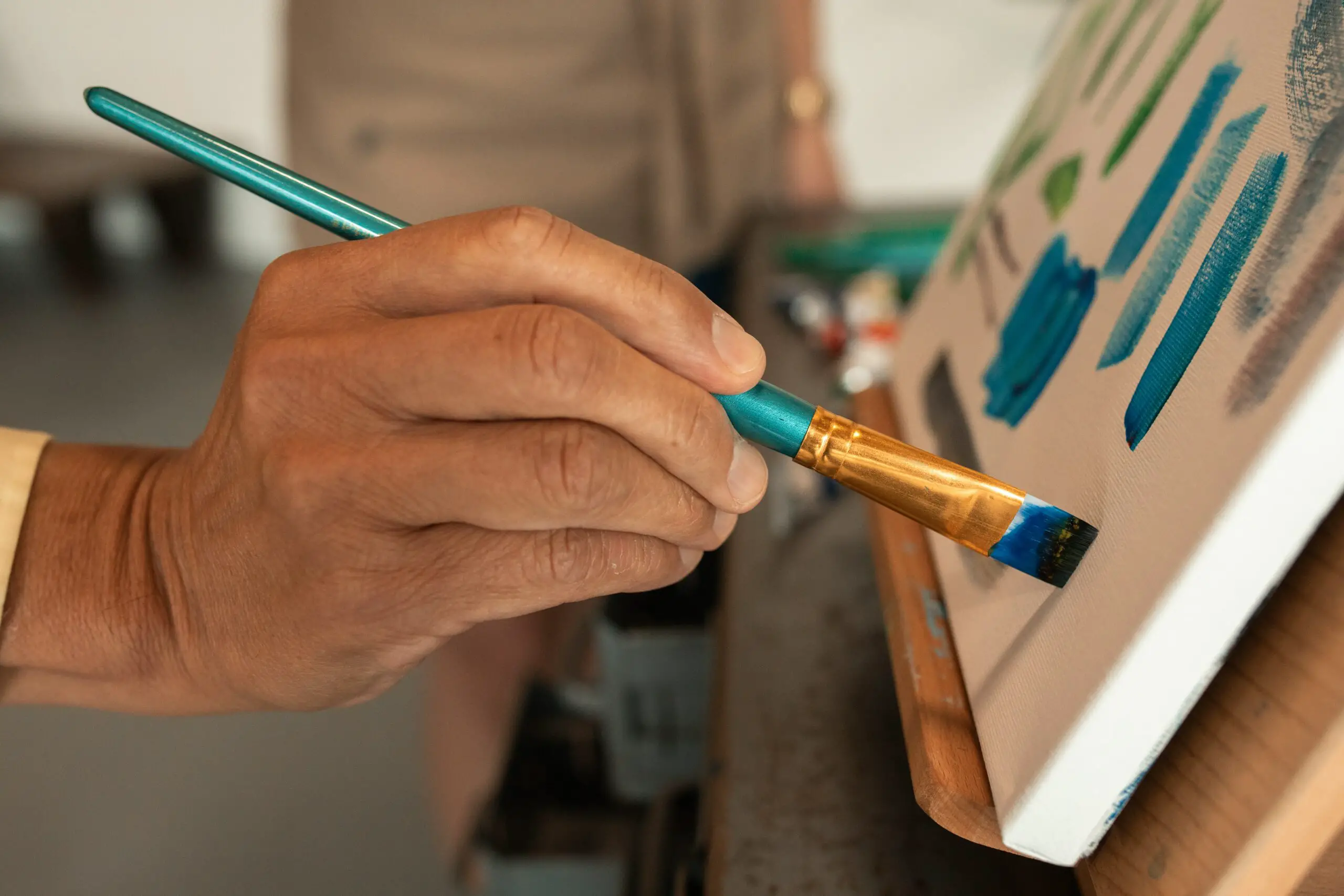As an acrylic artist, one of the most common questions I hear is whether or not acrylic paint can be used directly. This is a valid concern, especially for beginners who are just starting to explore the world of acrylics.
Acrylic paint can be used straight out of the tube in textured paintings. For thin and smoother applications, mix up to 1 part acrylic medium or water with 10 parts acrylic paint. Acrylic paint can be applied directly on absorbent surfaces such as wood, paper, cardboard, clay, and unglazed ceramic.
In this article, we’ll explore what it means to use acrylic paint directly, the pros and cons of doing so, and some tips on how to make the most out of your acrylic painting experience. So, whether you’re a seasoned artist or just starting, keep reading to learn more about using acrylic paint directly.
Can you use acrylic paint straight from the tube?
The majority of acrylic paint tubes and bottles include directions that advise adding water or medium to obtain the desired consistency and texture. However, this does not exclude us from using acrylic paint straight from the tube. Everything depends on variables like the paint’s thickness, the surface being painted on, and the desired outcome.
Can you use acrylic paint without water?
Acrylic paint is safe to use without water. Many painters use undiluted acrylic paint straight from the tube or jar for various effects. Especially if an artist wishes to add texture and depth to their work, it is suggested to use heavy-body acrylic paints straight from the tube. Some artists prefer the texture that heavy-body acrylic paint creates and use it straight from the tube without any mixing.
Even if you wish to use it directly from the tube, you should carefully prime and prepare the surface before painting to ensure that the paint adheres well and does not flake or peel over time.
Without water, acrylic paint keeps its brilliant color and consistency, which is a benefit. Water can thin acrylic paint’s color and alter the thickness of the paint. Undiluted acrylic paint allows you to keep the color’s full intensity and saturation, which is perfect for producing solid and vivid paintings.
The ability to layer and apply acrylic paint thickly to add texture and dimension is another benefit of utilizing acrylic paint straight out of the tube. Acrylic paint dries quickly, allowing you to layer different colors, making it perfect for impasto effects and building up the painting.
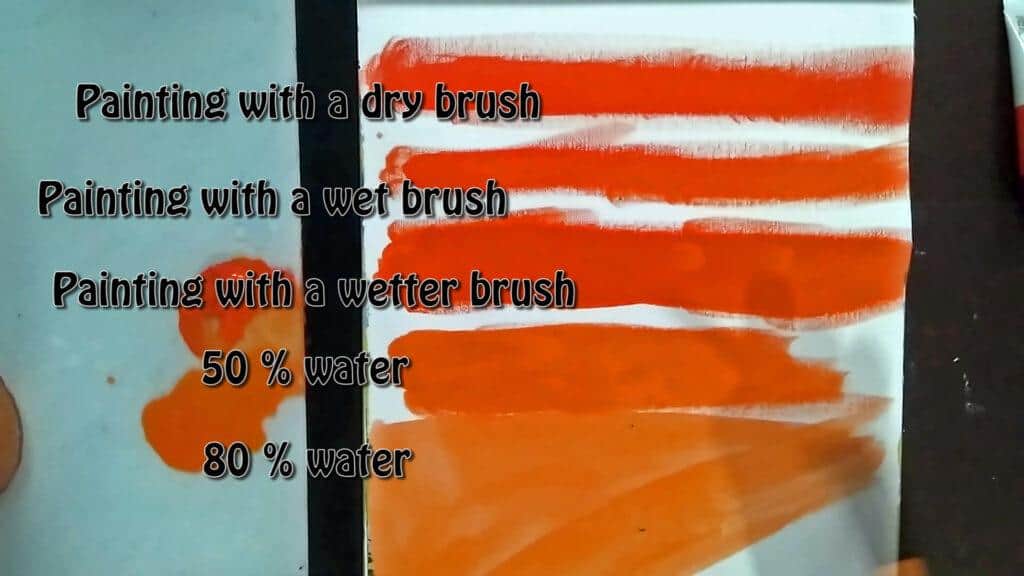
I have written a whole article about using water with acrylic paint. You will know the safe limit of adding water and ways to eliminate those limits, in that article.
Problems with using acrylic paint straight from the tube
- Tend to dry quickly: Acrylic paint dries quickly, mainly when applied directly to a surface, without diluting. As a result, once the paint has dried, it is challenging to mix colors or adjust the artwork.
- Thicker Paint Layers: When using acrylic paint alone, it may take several coats to cover an area evenly and smoothly. As a result, the paint may be applied thicker and may eventually peel or break.
- Smooth application is more difficult: When acrylic paint that is applied straight from the tube has a thick, heavy body consistency. This thick consistency can leave a textured, impasto effect when applied directly to a surface and it is difficult to smoothen the application.
- Color Mixing Difficulties: Undiluted acrylic paint may be more challenging to blend with other colors, making it more difficult to obtain a variety of hues and tones.
- Brush Strokes: Applying acrylic paint directly from the tube without a diluting agent may cause brush strokes to be apparent, which some artists may find unattractive.
Some artists thin their acrylic paint with water before painting the canvas to prevent these problems. It can make the paint more workable and blendable. Yet, adding a tiny bit of water is essential to prevent the color from fading and the paint’s opacity from being reduced.
Using acrylic paint with water
Since Heavy-body acrylic paint has a thick consistency, it can be thinned by adding water or an acrylic medium, which will make the paint easier to spread and blend. However, if an artist is on a tight budget, it will not be financially practical to use them in this way since good quality heavy-body acrylic paints are typically more expensive than other varieties of acrylic paint.
To achieve the desired effect, you can add water to acrylic paint in different amounts. In general, acrylic paint can be mixed with water in a ratio of 1 part paint to 10 parts water without a problem. However, this ratio may change depending on the ideal consistency you require.
Additionally, the water amount needed for acrylic paint depends on the paint’s grade; it typically comprises between 45% and 55% of water. To get the proper consistency, I typically prefer to combine water with acrylic paint, especially with thick heavy-body acrylic paint. I recommend using artist-grade paint mixed with water due to its high pigment concentration.
Can I use acrylic paint without an acrylic medium?
Acrylic paint is capable of working without a medium. Many artists use acrylic paint in its original form straight from the container to create various effects. Most manufacturers approve of it.
Have you ever wondered why acrylic mediums are recommended for thinning acrylic paint when water seems to do the job just fine? Well, it turns out that water can weaken the binding chemicals in the paint, making the paint layer to cracking or flake over time. This is one of the main reasons why artists are advised to use acrylic mediums instead of water for thinning.
However, some artists like Nancy Reyner have been successful in mixing water with paint in ratios of up to 80% without experiencing adhesion issues for high-quality acrylic paint like Golden Acrylic Paint. But, acrylic paint and water can still be safely mixed up to a 1:10 ratio.
The texture, viscosity, transparency, and drying time of acrylic paint can be changed using an acrylic medium. As a result, many acrylic paint manufacturers are starting to create and release various mixing acrylic mediums with different characteristics.
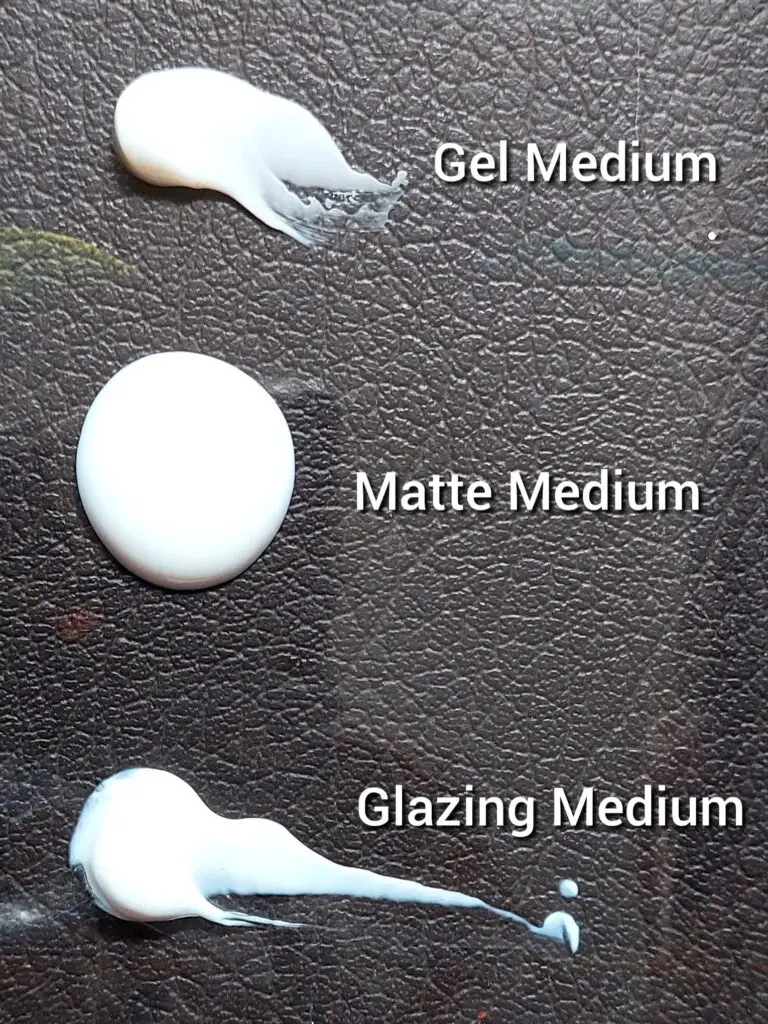
Table 1: Characteristics of Acrylic Mediums
| Type of Acrylic Medium | Characteristics |
| Gel medium | The thick, gel-like consistency creates impasto effects and builds up texture; extending drying time compared to water. |
| Matte medium | Reduces glossiness and creates a more matte finish and extends the drying time compared to water. |
| Gloss medium | Improves flow and workability and easier to apply while allowing for smoother more even brushstrokes. |
| Flow improver | Improves flow and workability and is easier to apply while allowing for smoother more even brushstrokes. |
| Pouring medium | Creates a fluid, self-leveling consistency for use in pouring and dripping techniques. |
This chart gives you an idea of the various uses for acrylic medium in painting, including changing the paint’s texture, and finish, lengthening drying time, and enhancing flow. You could produce a wide range of effects and get the desired results for your artwork by experimenting with different acrylic mediums.
Do you need to prime before using acrylic paint?
You can use acrylic paint straight on materials like canvas, paper, or wood without priming. But priming has some benefits that can enhance the effectiveness and durability of your artwork.
Priming is typically required to get the most outstanding results when applying acrylic paint straight from the tube on materials like fabric, metal, glass, and plastic.
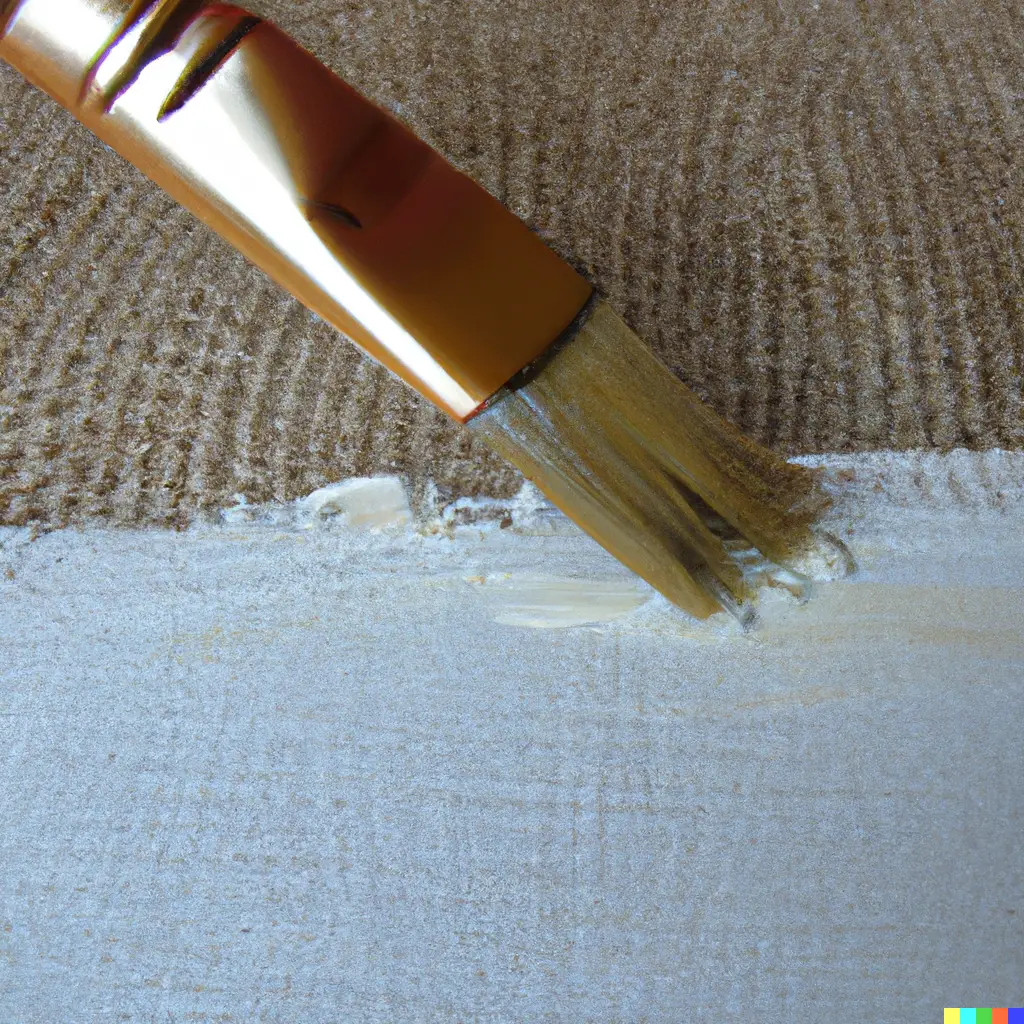
Non-porous surfaces like metal, glass, and plastic make it difficult for the paint to adhere properly and cause it to peel or flake off gradually. Additionally, if you attempt to apply acrylic paint straight on these surfaces without priming, you may face the following issues.
- Adhesion: Acrylic paint may only adhere well to these surfaces with a proper primer. It can cause the paint to peel or flake off over time, ruining your artwork.
- Uneven coverage: The color may only go on smoothly or evenly with a primer, leaving streaks or patches.
- Poor color vibrancy: The paint may only appear as vibrant or opaque on some surfaces with a primer to help it adhere and spread evenly.
- Durability: Paint not well attached to the surface may be more prone to damage, such as scratches or chipping.
On what surfaces can acrylic paint be directly used?
These are some examples of different surfaces on which acrylic paint can be used directly and also, you can use the tips that are given here.
- Wall: Remove dust or dirt from the wall’s surface by cleaning it. With a brush or roller, paint the wall with acrylic directly. You might need to use several coats of paint, depending on the final result you want.
- Fabric: Pre-wash the cloth to remove any sizing or finishes that make it difficult for the paint to stick. Using a brush, sponge, or stamp, directly paint the fabric with acrylic paint. After letting the paint entirely dry, heat-set it as directed by the manufacturer.
- Canvas: Use a brush or palette knife to apply the acrylic paint directly to the canvas. Color can be applied in layers to add texture or combine different hues. Before adding more color, let the previous layer dry.
- Paper: With a brush, sponge, or roller, apply acrylic paint directly onto the paper. To stop the paint from flowing through, you may need to use a primer or gesso, depending on the thickness of the paper.
- Cardboard: Use a brush to apply the acrylic paint to the cardboard directly. Before adding further layers, let the paint completely dry.
- Wood: Sand the wood surface to produce an even and smooth texture. Use a brush or roller to paint with the acrylic paint over the wood. You can also use a sealer or primer for a smoother surface and greater adhesion.
- Polymer Clay: Apply the acrylic paint with a suitable tool straight on the polymer clay. Before adding more layers, let the paint completely dry. A sealer can also protect the paint and produce a glossy surface.
- Air-dry Clay: Apply the acrylic paint straight to the air-dry clay with a brush. Before adding more layers, let the paint completely dry. You can also use a sealer to shield the color and provide a glossy surface.
- Stone: Remove any dust or particles from the surface by cleaning it first. Using a brush or sponge, paint the stone with acrylic directly. Before adding further layers, always let the paint dry.
- Plaster: Apply acrylic paint directly onto the plaster with a brush or sponge. Before adding extra coats, give the paint time to dry completely. You can also add a sealer to protect the paint and give it a leathery texture.
Table 2: Pros and cons of using each surface for acrylic painting
| Surface | Pros of the surface | Cons of the surface |
|---|---|---|
| Wall | It creates a solid color and can be layered for texture or blended for a smooth effect. | Maybe less workable and dry more quickly, and may require multiple layers for even coverage |
| Fabric | Long-lasting, can create a permanent design, and can be heat-set for durability | It may crack or peel if not heat-set properly and may not be as soft or flexible as fabric paint. |
| Canvas | It may need to be smooth, workable, or adhere well to the surface. | Easy to apply, dries quickly, and creates a solid color |
| Paper | It can create a crisp and vibrant design, easy to apply, and dries quickly | It may bleed through the paper and may not be as smooth or workable |
| Cardboard | It is quick to dry and simple to use and can provide a solid colour. | It creates a solid color and can be sealed for protection and longevity |
| Wood | It creates a solid color and can be sealed for protection and longevity | It may require sanding and a sealer or primer for better adhesion |
| Polymer Clay | It creates a permanent design, can be sealed for protection, and has a glossy finish. | It may require a sealant for durability and may not adhere well to the surface. |
| Air-dry Clay | It creates a permanent design, can be sealed for protection, and has a glossy finish. | It may require a sealant for durability and may not adhere well to the surface. |
| Stone | It creates a solid color and can be sealed for protection and longevity | It may require cleaning and a sealer or primer for better adhesion |
| Plaster | It creates a solid colour and can be sealed for protection and longevity | It may require a sealer or primer for better adhesion and may not be as smooth or workable |
Types of Acrylic Paint
The acrylic paint market provides you with many possibilities, including various acrylic paints with different qualities and features. The industry offers several popular varieties of acrylic paints, as mentioned in the chart below.
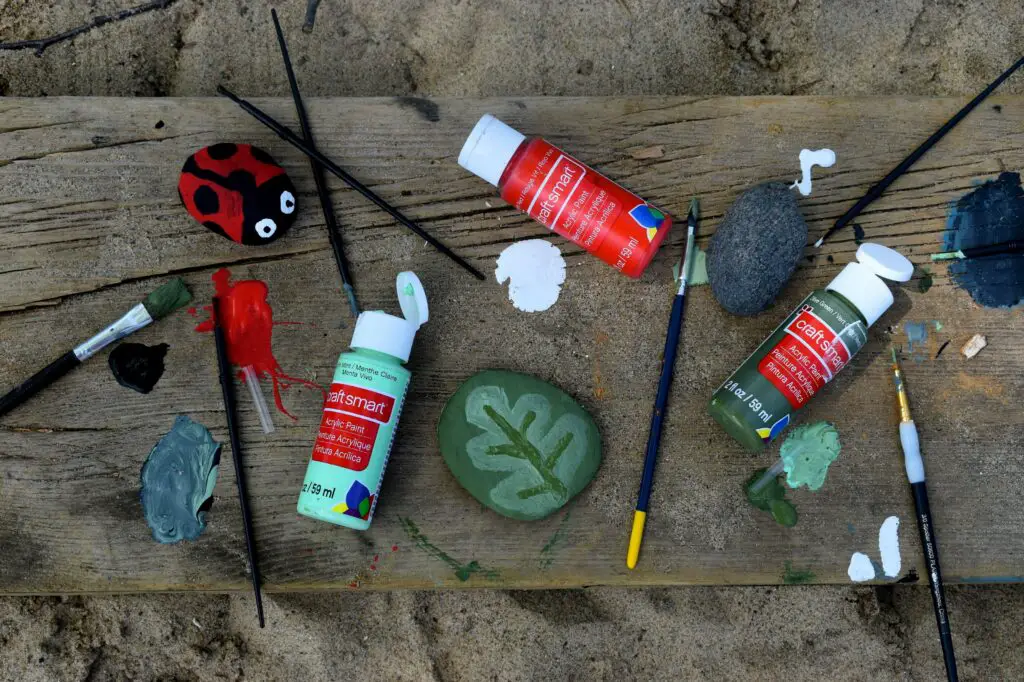
Table 3: Types of acrylic paints, their special features, and how to use them
| Type of Acrylic Paint | Special Features | How to Use It |
|---|---|---|
| Thin and highly pigmented for watercolor-like effects, fine details and lines | Thick, buttery consistency for smooth, thin layers of paint, impasto techniques and to create texture | Apply with a brush, usually thickly or with a pen to create bold graphic lines and designs. |
| Fluid acrylics | Thin, flowing consistency for smooth washes and pouring | Apply with a brush, pour onto the surface, or use in a spray bottle for airbrushing effects |
| High-flow acrylics | Apply with a brush or palette knife either with water, acrylic medium, or as it is | Apply with a brush, pen, or airbrush for fine details and intricate designs. |
| Acrylic gouache | Matte finish, highly pigmented for illustrative work and design | Use a dip pen, fountain pen, or airbrush for bold, graphic lines and washes of color. |
| Open acrylics | Longer drying time for blending and wet-on-wet techniques | Apply with a brush, and palette knife to blend colors more |
| Acrylic inks | Highly pigmented, fluid to use with pens and airbrushes | Use a dip pen, fountain pen, or airbrush for bold, graphic lines and washes of colour. |
Conclusion
In summary, acrylic paint is a highly versatile and easy-to-use art medium that can be used directly on various surfaces. Depending on your desired outcome, you may adjust the consistency of acrylic paint by mixing it with water or mediums. When selecting your acrylic paint, consider the different types and properties available to ensure you choose the right one for your needs.

